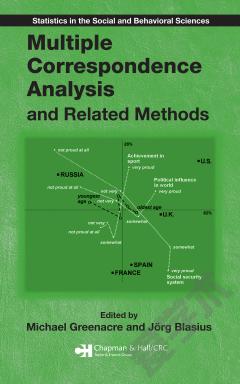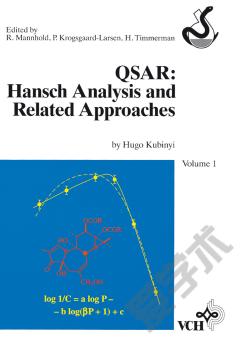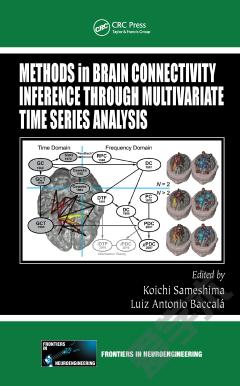Multiple Correspondence Analysis and Related Methods
CORRESPONDENCE ANALYSIS AND RELATED METHODS IN PRACTICE, Jorg Blasius and Michael Greenacre A simple example Basic method Concepts of correspondence analysis Stacked tables Multiple correspondence analysis Categorical principal components analysis Active and supplementary variables Multiway data Content of the book FROM SIMPLE TO MULTIPLE CORRESPONDENCE ANALYSIS, Michael Greenacre Canonical correlation analysis Geometric approach Supplementary points Discussion and conclusions DIVIDED BY A COMMON LANGUAGE: ANALYZING AND VISUALIZING TWO-WAY ARRAYS, John C. Gower Introduction: two-way tables and data matrices Quantitative variables Categorical variables Fit and scaling Discussion and conclusion NONLINEAR PRINCIPAL COMPONENTS ANALYSIS AND RELATED TECHNIQUES, Jan de Leeuw Linear PCA Least-squares nonlinear PCA Logistic NLPCA Discussion and conclusions Software Notes THE GEOMETRIC ANALYSIS OF STRUCTURED INDIVIDUALS o VARIABLES TABLES, Henry Rouanet PCA and MCA as geometric methods Structured data analysis The basketball study The EPGY study Concluding comments CORRELATIONAL STRUCTURE OF MULTIPLE-CHOICE DATA AS VIEWED FROM DUAL SCALING, Shizuhiko Nishisato Permutations of categories and scaling Principal components analysis and dual scaling Statistics for correlational structure of data Forced classification Correlation between categorical variables Properties of squared item-total correlation Structure of nonlinear correlation Concluding remarks VALIDATION TECHNIQUES IN MULTIPLE CORRESPONDENCE ANALYSIS, Ludovic Lebart External validation Internal validation (resampling techniques) Example of MCA validation Conclusion MULTIPLE CORRESPONDENCE ANALYSIS OF SUBSETS OF RESPONSE CATEGORIES, Michael Greenacre and Rafael Pardo Correspondence analysis of a subset of an indicator matrix Application to women's participation in labor force Subset MCA applied to the Burt matrix Discussion and conclusions SCALING UNIDIMENSIONAL MODELS WITH MULTIPLE CORRESPONDENCE ANALYSIS, Matthijs J. Warrens and Willem J. Heiser The dichotomous Guttman scale The Rasch model The polytomous Guttman scale The graded response model Unimodal models Conclusion THE UNFOLDING FALLACY UNVEILED: VISUALIZING STRUCTURES OF DICHOTOMOUS UNIDIMENSIONAL ITEM-RESPONSE-THEORY DATA BY MULTIPLE CORRESPONDENCE ANALYSIS, Wijbrandt van Schuur and Jorg Blasius Item response models for dominance data Visualizing dominance data Item response models for proximity data Visualizing unfolding data Every two cumulative scales can be represented as a single unfolding scale Consequences for unfolding analysis Discussion REGULARIZED MULTIPLE CORRESPONDENCE ANALYSIS, Yoshio Takane and Heungsun Hwang The method Examples Concluding remarks THE EVALUATION OF "DON'T KNOW" RESPONSES BY GENERALIZED CANONICAL ANALYSIS, Herbert Matschinger and Matthias C. Angermeyer Method Results Discussion MULTIPLE FACTOR ANALYSIS FOR CONTINGENCY TABLES, Jerome Pages and Monica Becue-Bertaut Tabular conventions Internal correspondence analysis Balancing the influence of the different tables Multiple factor analysis for contingency tables (MFACT) MFACT properties Rules for studying the suitability of MFACT for a data set Conclusion SIMULTANEOUS ANALYSIS: A JOINT STUDY OF SEVERAL CONTINGENCY TABLES WITH DIFFERENT MARGINS, Amaya Zarraga and Beatriz Goitisolo Simultaneous analysis Interpretation rules for simultaneous analysis Comments on the appropriateness of the method Application: study of levels of employment and unemployment according to autonomous community, gender, and training level Conclusions MULTIPLE FACTOR ANALYSIS OF MIXED TABLES OF METRIC AND CATEGORICAL DATA, Elena Abascal, Ignacio Garcia Lautre, and M. Isabel Landaluce Multiple factor analysis MFA of a mixed table: an alternative to PCA and MCA Analysis of voting patterns across provinces in Spain's 2004 general election Conclusions CORRESPONDENCE ANALYSIS AND CLASSIFICATION, Gilbert Saporta and Ndeye Niang Linear methods for classification The "Disqual" methodology Alternative methods A case study Conclusion MULTIBLOCK CANONICAL CORRELATION ANALYSIS FOR CATEGORICAL VARIABLES: APPLICATION TO EPIDEMIOLOGICAL DATA, Stephanie Bougeard, Mohamed Hanafi, Hicham Nocairi, and El-Mostafa Qannari Multiblock canonical correlation analysis Application Discussion and perspectives PROJECTION-PURSUIT APPROACH FOR CATEGORICAL DATA, Henri Caussinus and Anne Ruiz-Gazen Continuous variables Categorical variables Conclusion CORRESPONDENCE ANALYSIS AND CATEGORICAL CONJOINT MEASUREMENT, Anna Torres-Lacomba Categorical conjoint measurement Correspondence analysis and canonical correlation analysis Correspondence analysis and categorical conjoint analysis Incorporating interactions Discussion and conclusions A THREE-STEP APPROACH TO ASSESSING THE BEHAVIOR OF SURVEY ITEMS IN CROSS-NATIONAL RESEARCH, Jorg Blasius and Victor Thiessen Data Method Solutions Discussion ADDITIVE AND MULTIPLICATIVE MODELS FOR THREE-WAY CONTINGENCY TABLES: DARROCH (1974) REVISITED, Pieter M. Kroonenberg and Carolyn J. Anderson Data and design issues Multiplicative and additive modeling Multiplicative models Additive models: three-way correspondence analysis Categorical principal components analysis Discussion and conclusions A NEW MODEL FOR VISUALIZING INTERACTIONS IN ANALYSIS OF VARIANCE, Patrick J.F. Groenen and Alex J. Koning Holiday-spending data Decomposing interactions Interaction decomposition of holiday spending Conclusions LOGISTIC BIPLOTS. Jose L. Vicente-Villardon, M. Purificacion Galindo-Villardon, and Antonio Blazquez-Zaballos Classical biplots Logistic biplot Application: microarray gene expression data Final remarks References Appendix Index
{{comment.content}}








 京公网安备 11010802027623号
京公网安备 11010802027623号